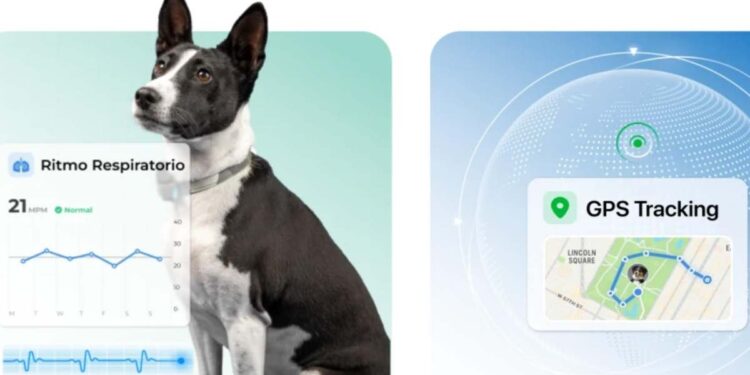It was inevitable that, sooner rather than later, Artificial Intelligence (AI) would find its place in the booming pet business. The most surprising example is the Invoxia Minitailz, a device that collects dozens of biometric data from dogs, such as respiratory rate, heart rate during activity and rest, well-being analysis, frequency of runs, walks, barks, and, of course, the real-time location of the pet.
The gadget is installed on the dog’s collar, in order to maintain permanent communication with the owner with the help of a mobile application. Among other arguments, the manufacturer points out up to a dozen functionalities of an “all-in-one” to help “detect early changes before serious problems arise”. The gadget also becomes an entertaining whim for statistics lovers, with precise graphs, reports, and histories of all kinds. In addition, its connectivity offers the possibility of sharing the dog’s metrics with the veterinarian.
The cognitive properties of the 15-gram Invoxia Minitailz come from Mistral AI, a French company founded by former employees of Meta Platforms and Google DeepMind and specialized in offering open source, modular, portable, and customizable solutions in English, French, Italian, German, and Spanish. With the help of this AI provider, the locator “detects, records, and transmits the dog’s activity data directly to the smartphone,” explains the company.
Likewise, the GPS reveals daily habits and behaviors, as well as the frequency of activities such as walking, running, barking, playing, scratching, eating, and riding in the car. To this is added the heart scanning, with the evolution of the pulse during activity and at rest, as well as the respiratory frequency, whose vital parameters allow monitoring the well-being of the animal.
The location system is similar to others on the market that use the mobile network (4G LTE-M), with data collected and transmitted to the mobile, especially suitable for escape-prone dogs. The company points out that the device sends notifications of entries and exits from predefined zones, with the possibility of creating unlimited zones with LED light pulses or sound alerts. The company makes clear the differences with Apple’s Airtag, a technology that “can only communicate if it detects a nearby Apple device. While this may be useful in urban areas, it may be less effective in rural areas,” they add.
The battery life, rechargeable via USB with a maximum of 3.5 hours, can last up to two weeks and its electromagnetic waves are half of those emitted by a conventional mobile phone. The main drawback of the gadget is its cost: the hardware costs 99 euros, and the subscription ranges from 129.95 euros for one year to 229.95 euros for two years.


